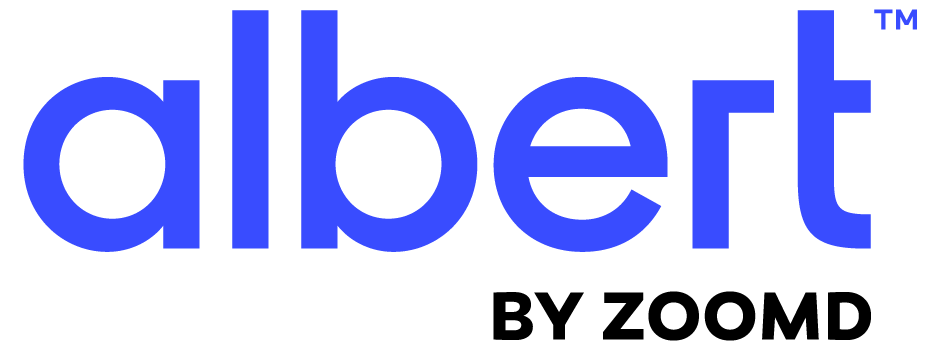
Albert.ai Autonomous Marketing: Complete Buyer's Guide
Enterprise-focused cross-channel campaign optimization platform
Albert.ai is an enterprise-focused cross-channel campaign optimization platform that operates with minimal human intervention across search, social, and programmatic advertising channels. The platform distinguishes itself through autonomous execution capabilities that continuously optimize campaigns in real-time, contrasting with competitors that primarily offer human-assisted optimization tools[46][49][57].
Market Position & Maturity
Market Standing
Albert.ai maintains a strong enterprise market position as a comprehensive autonomous marketing platform, differentiating itself from competitors focused on specific capabilities like creative generation or single-channel optimization[46][49][57].
Company Maturity
Documented enterprise customer implementations across luxury brands (Cosabella), financial services (Interactive Investor), and e-commerce platforms (RedBalloon), indicating broad vertical applicability and operational scale for performance-focused campaigns[54][62][63].
Industry Recognition
Positioning as Zoomd's AI-powered marketing ally, though comprehensive competitive rankings require additional research[46].
Longevity Assessment
Consistent customer satisfaction with documented trust in Albert.ai's decision-making capabilities, as evidenced by customer testimonials highlighting confidence in autonomous campaign management[54][62].
Proof of Capabilities
Customer Evidence
Harley-Davidson NYC represents Albert.ai's most compelling enterprise success story, achieving a 2,930% lead increase with 40% lower cost-per-lead, with Albert.ai attributed to 40% of motorcycle sales[51].
Quantified Outcomes
Documented outcomes include 2,930% lead increases[51], 336% ROAS improvements[54], and 25% CAC reductions[63].
Case Study Analysis
Cosabella's luxury brand transformation achieved 336% ROAS and 155% revenue growth within months of implementation, alongside a 20x increase in social purchases[54].
Market Validation
Cross-Industry Validation spans luxury brands, financial services, and e-commerce platforms, indicating broad vertical applicability for performance-focused campaigns[54][62][63].
Reference Customers
Enterprise customers include Cosabella, Interactive Investor, and RedBalloon, representing diverse vertical applications[54][62][63].
AI Technology
Albert.ai's autonomous optimization engine operates through proprietary algorithms that continuously analyze real-time performance data across search, social, and programmatic channels simultaneously, adjusting bidding, targeting, and budget allocation without human intervention[46][57].
Architecture
Technical Architecture Requirements include substantial data infrastructure with CRM/ERP connectivity and robust historical performance data for algorithm training[49][54].
Primary Competitors
Competitors include AdCreative.ai and Persado, which focus on creative scoring and content generation respectively[49].
Competitive Advantages
Albert.ai's strongest competitive position is its autonomous execution across search, social, and programmatic simultaneously, providing operational efficiency that channel-specific tools cannot match[46][57].
Market Positioning
Albert.ai operates as a complete campaign management platform with reduced human intervention requirements across multiple channels[46][49][57].
Win/Loss Scenarios
Favors Albert.ai for organizations with multi-channel performance campaigns, technical integration capabilities, and substantial historical data[49][54].
Key Features

Pros & Cons
Use Cases
Featured In Articles
Comprehensive analysis of AI Digital Ad Design for AI Marketing & Advertising for AI Marketing & Advertising professionals. Expert evaluation of features, pricing, and implementation.
How We Researched This Guide
About This Guide: This comprehensive analysis is based on extensive competitive intelligence and real-world implementation data from leading AI vendors. StayModern updates this guide quarterly to reflect market developments and vendor performance changes.
63+ verified sources per analysis including official documentation, customer reviews, analyst reports, and industry publications.
- • Vendor documentation & whitepapers
- • Customer testimonials & case studies
- • Third-party analyst assessments
- • Industry benchmarking reports
Standardized assessment framework across 8 key dimensions for objective comparison.
- • Technology capabilities & architecture
- • Market position & customer evidence
- • Implementation experience & support
- • Pricing value & competitive position
Research is refreshed every 90 days to capture market changes and new vendor capabilities.
- • New product releases & features
- • Market positioning changes
- • Customer feedback integration
- • Competitive landscape shifts
Every claim is source-linked with direct citations to original materials for verification.
- • Clickable citation links
- • Original source attribution
- • Date stamps for currency
- • Quality score validation
Analysis follows systematic research protocols with consistent evaluation frameworks.
- • Standardized assessment criteria
- • Multi-source verification process
- • Consistent evaluation methodology
- • Quality assurance protocols
Buyer-focused analysis with transparent methodology and factual accuracy commitment.
- • Objective comparative analysis
- • Transparent research methodology
- • Factual accuracy commitment
- • Continuous quality improvement
Quality Commitment: If you find any inaccuracies in our analysis on this page, please contact us at research@staymodern.ai. We're committed to maintaining the highest standards of research integrity and will investigate and correct any issues promptly.